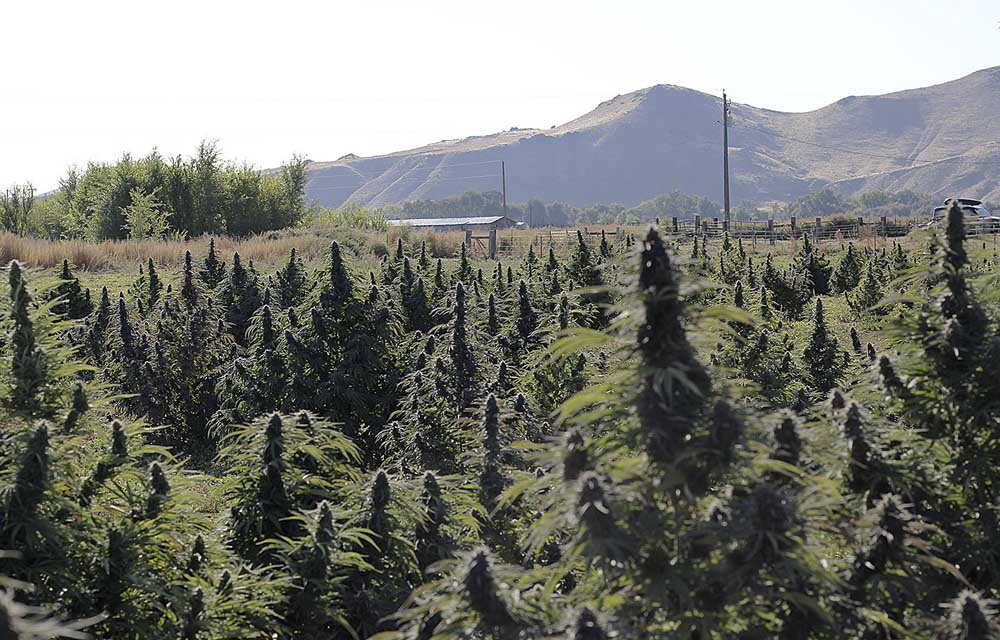Oregon hemp regulators get more ‘boots on the ground’
Published 8:00 am Wednesday, August 18, 2021

- A field of hemp grows in Oregon. Thestate’sDepartment of Agriculture has been authorized to increase spending on its hemp program from about $500,000 to $3.5 million, allowing the agency to increase hemp staff from four to 12 positions.
Oregon hemp farmers will soon see more regulatory “boots on the ground” as the state’s Department of Agriculture triples the number of employees dedicated to the crop.
The ODA will expand its hemp staff from four to 12 positions in the 2021-23 biennium after the agency was authorized to increase spending on the program from about $500,000 to $3.5 million.
Lawmakers approved the higher hemp program expenditures partly due to concerns that the crop was being used as a cover for illicit marijuana production, said Lauren Henderson, ODA’s assistant director.
“People could not say: That is a hemp field or that is a marijuana field. Or that is legal or that is not,” he said. “The concern is we don’t know.”
Though both plants are forms of cannabis that look similar, hemp doesn’t have enough of the compound THC to cause the psychoactive effects of marijuana.
Marijuana is more tightly regulated under state law than hemp and it’s also illegal to grow under federal law.
The ODA’s hemp program started small with 13 growers about six years ago and was initially overseen by staff from other agency programs, Henderson said.
As the program grew with the crop’s popularity, the staff has often focused on hemp registration while inspections and compliance enforcement haven’t kept up, he said.
Among the new staff will be a hemp program manager who will serve as a point person for growers, as well as employees who perform inspections and compliance work in specific regions, Henderson said.
“They will be our eyes and ears, our boots on the ground,” said Sunny Summers, ODA’s cannabis policy coordinator.
The added positions will allow the agency to better respond to complaints, follow up on regulatory questions and enforce program rules, Henderson said.
“I expect now that we’re more visible on the ground, we will most likely find compliance issues,” he said.
The additional money will come from reserves raised from hemp licenses, rather than from the state’s general fund. The Legislature approved expanding the hemp staff as part of ODA’s 2021-2023 budget, which was recently signed by Gov. Kate Brown.
“We were prudent in knowing we would need additional resources,” Henderson said.
The agency expects the 12 positions will be the minimum number needed to run the hemp program, despite recent fluctuations in production.
Hemp production rose from about 100 acres in 2015 to a peak of 64,000 acres in 2019, but dropped to 28,000 acres last year due to economic problems. So far in 2021, only 6,500 hemp acres have been registered with ODA.
Slumps in production may prompt the agency to consider raising license fees, Henderson said.
The increased enforcement spending is “long overdue” for the hemp industry, whose reputation suffers if it’s associated with illicit marijuana, said Jerry Norton, a hemp entrepreneur and board member of the Oregon Industrial Hemp Farmers Association.
“That puts a black eye on the industry,” Norton said. “We don’t want that within the industry.”
ODA’s increased spending on the hemp program will dovetail with broader legal changes approved by lawmakers as part of House Bill 3000, an omnibus cannabis bill passed during the 2021 legislative session.
The agency’s hemp staff will work with employees from the Oregon Liquor Control Commission to conduct “spot tests” to ensure the crop is not actually marijuana, Summers said. These checks will be separate from the tests that ensure hemp is below 0.3% THC that occur at harvest time.
Hemp growers will also undergo background checks, as required by federal law, and ODA is cooperating with other agencies to perform a “safety assessment” of hemp producers concentrated in Southern Oregon, she said.
As with other ODA staff, the safety of hemp inspectors is the top priority and they’re instructed not to put themselves in risky situations, Henderson said. “They know not to push the envelope, so to speak.”






